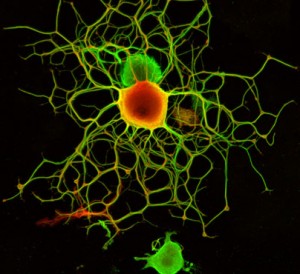
Dr. Henry Markram’s Team Uses Neurolucida in New Blue Brain Study
Blue Brain Project researchers have hit an important milestone in their quest to create a virtual model of the human brain. They figured out how to accurately predict the location of synapses in the neocortex; and Neurolucida played an important part.
In a paper published last week in PNAS, the research team led by Dr. Henry Markram at the Brain Mind Institute at the Ecole Polytechnique Fédérale de Lausanne (EPFL), in Lausanne, Switzerland, demonstrated that neurons grow independently of each other, forming connections in places where they accidentally collide. In other words, i is not chemicals that guide axons and dendrites along their path to form synapses.
“Neurons are growing as physically independent of each other as possible. They’re just expressing themselves, saying ‘I want this shape, this is my shape. I’m going to grow like this,’ and when they’ve all grown together, they just take what they get when they bump into each other. It’s just going to grow and rely on accidental collisions to decide where it’s going to form synapses. It’s a remarkable design principle of the brain,” Dr. Markram told EPFL News.
To achieve these results, the researchers used Neurolucida to create 3D models of neurons and form a virtual reconstruction of a cortical microcircuit. They analyzed the places where connections occurred, and found their model to be remarkably similar to the real-brain sample.
Read our previous article about the Blue Brain Project, as well as the research team’s latest paper:
S.L. Hill, Y. Wang, I. Riachi, F. Schürmann, H. Markram: Statistical connectivity provides a sufficient foundation for specific functional connectivity in neocortical neural microcircuits, PNAS, Published online before print September 18, 2012, doi: 10.1073/pnas.1202128109



